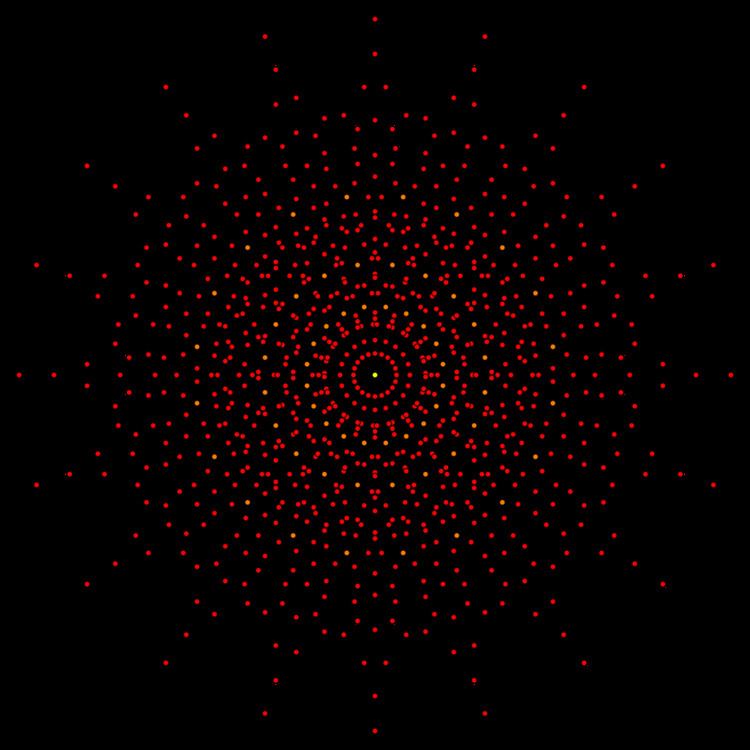 | ||
In geometry, a 10-cube is a ten-dimensional hypercube. It has 1024 vertices, 5120 edges, 11520 square faces, 15360 cubic cells, 13440 tesseract 4-faces, 8064 5-cube 5-faces, 3360 6-cube 6-faces, 960 7-cube 7-faces, 180 8-cube 8-faces, and 20 9-cube 9-faces.
Contents
It can be named by its Schläfli symbol {4,38}, being composed of 3 9-cubes around each 8-face. It is sometimes called a dekeract, a portmanteau of tesseract (the 4-cube) and deka- for ten (dimensions) in Greek, It can also be called an icosaxennon or icosa-10-tope as a 10 dimensional polytope, constructed from 20 regular facets.
It is a part of an infinite family of polytopes, called hypercubes. The dual of a dekeract can be called a 10-orthoplex or decacross, and is a part of the infinite family of cross-polytopes.
Cartesian coordinates
Cartesian coordinates for the vertices of a dekeract centered at the origin and edge length 2 are
(±1,±1,±1,±1,±1,±1,±1,±1,±1,±1)while the interior of the same consists of all points (x0, x1, x2, x3, x4, x5, x6, x7, x8, x9) with −1 < xi < 1.
Derived polytopes
Applying an alternation operation, deleting alternating vertices of the dekeract, creates another uniform polytope, called a 10-demicube, (part of an infinite family called demihypercubes), which has 20 demienneractic and 512 enneazettonic facets.
